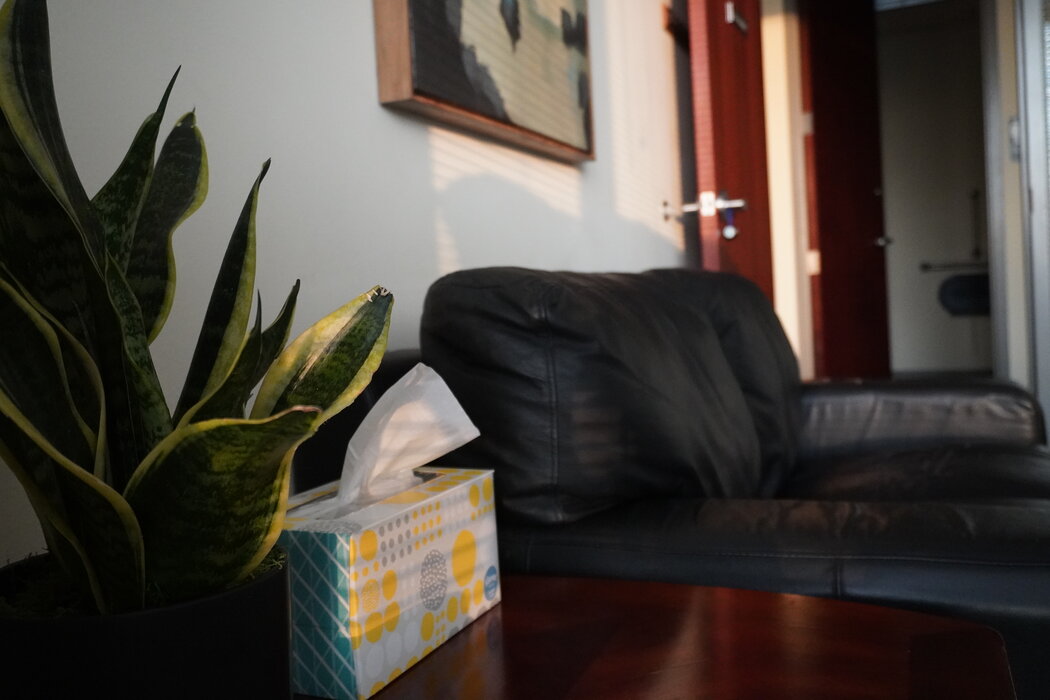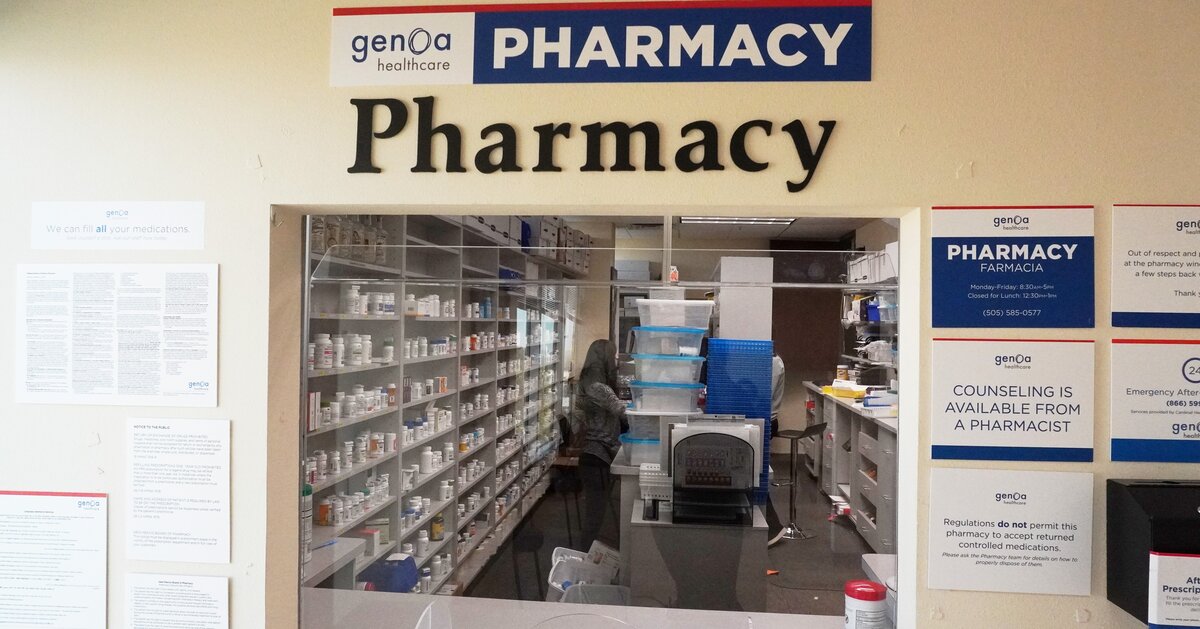Opioids are a class of drugs that include the illegal drug heroin as well as prescription pain relievers like fentanyl, hydrocodone, hydromorphone, and many others. These drugs interact with nerve receptors in the body and brain and produce euphoria and pain relief. For medical use, they are first prescribed by a physician for treatment of ongoing pain. When used as prescribed and for a brief period, they are a highly effective means of pain relief.
The unfortunate consequence of taking this type of drug is that they are highly susceptible to dependency or addiction. If opioids are misused, taken in a way not prescribed by a physician, or taken in larger quantities than recommended, a person can become dependent on them. The time it takes to become dependent on opioids differs from person to person, but opioid dependence can occur in as little as five days. Although dependence is different from addiction, it is still a serious issue and needs to be addressed and treated carefully. Addiction, overdose, and even death can occur. Fortunately, dependency can be treated with the help of buprenorphine and buprenorphine with naloxone, more commonly known by the brand name Suboxone.
Is It Time for Opioid Detox? Take the Quiz
What Is Suboxone?
Suboxone is made up of two drugs in one and is used to treat opioid dependence. The combination of buprenorphine and naloxone make up the treatment drug known by the trade name Suboxone. The first part, buprenorphine, acts as a partial opioid agonist, which means it initiates a physical response when combined with an opioid receptor. The second part, naloxone, is a synthetic drug that acts as a full opioid antagonist, meaning it blocks opiate receptors in the central nervous system (CNS).
Buprenorphine/Suboxone can reverse the side effects of opioids and prevent withdrawal symptoms, but individuals with opioid dependency or addiction may continue to crave and/or obsess over the drugs that caused their dependency. As a result, taking Suboxone is only one part of the picture when it comes to recovering. Counseling and medical management, including Suboxone, make up the comprehensive recovery program crucial for success.
Suboxone: Pros and Cons
As with any prescription medication, Suboxone has a series of pros and cons.
Pros of buprenorphine/Suboxone include:
- Side effects of taking the medication are usually mild and don’t last long, especially compared to the side effects caused by opioid addiction, dependency, and withdrawal.
- Most people will start to feel better and report that their cravings ease within 72 hours of taking Suboxone.
- Suboxone prevents withdrawal symptoms from occurring, which increases the likelihood an individual will successfully cease use of opioids using a medically assisted treatment (MAT) program.
- Suboxone patients can taper use when ready to further mitigate any side effects.
Unfortunately, there is the potential to experience negative circumstances associated with taking Suboxone. As a result, patients should be aware of the cons of taking Suboxone as well as the pros.
Cons include:
- Buprenorphine/Suboxone does not work for everyone.
- Although they do not last long, side effects do occur. Side effects include infection, anxiety, depression, constipation, back pain, insomnia, headache, nausea, vomiting, lower leg edema, sore tongue, drowsiness, and dizziness.
- Some people have trouble tapering Suboxone use to stop taking the medication.
- Suboxone is not effective when taken alone. Education and counseling are needed as a part of an effective treatment plan.
What Is a Suboxone Program Like and How Does It Work?

Here’s what to expect from a comprehensive counseling, education, and recovery program while taking Suboxone:
Counseling and Coping Techniques
Counseling will help you learn coping techniques to deal with your life stresses in a healthy way.
Some examples of coping strategies used in a detox and opioid recovery setting are:
- Yoga in a group setting or on an individual basis
- Deep breathing exercises
- Daily meditation, guided meditation, and/or Reiki therapy
- Talk therapy, either in person or on a virtual basis
- Exercise, including walking, hiking, biking, and more
- Nutrition, including learning about how healthy eating plays a key role in treating the entire body
- Journaling, writing, and art expression, all of which can be effective tools to build self-accountability
These coping strategies are taught during treatment and encouraged throughout. The idea is that the person will continue using these techniques long-term to avoid high-stress situations, which can cause cravings and result in relapse.
Individual and Group Therapies

- Group therapy: These groups are led by psychologists, behavior therapists, and social workers, and they consist of many patients going through similar experiences
- Support groups: These groups are designed for long-term group meetups that help keep patients feeling supported and accountable to themselves and each other. Many people have formed long-lasting relationships with people they have met in recovery-based support groups.
- Individual therapy: Therapy designed on a one-on-one basis can help those who are just starting treatment or find it difficult to engage in a group setting.
Behavioral Therapy
Counseling and behavioral therapy provides a source of motivation that helps people stick with the treatment program. People who are dependent on or addicted to opioids are at notable risk of relapsing, even after detox. This risk is due to the strong physical and psychological cravings the drug can produce, especially when the person is faced with a stressful situation.
Triggers can bring back memories of using, and the reintroduction of a poor social network could lead to resuming unhealthy behaviors. Behavioral therapy helps dependent individuals realize that even the unhealthiest behaviors can be changed. You will learn to recognize the triggers that lead to resuming learned risky behaviors and change your response.
The Suboxone Treatment Program Team
Individuals entering a Suboxone treatment program do so to increase their chances of reducing and eliminating drug dependence. While in the program, you are held accountable for your actions, and this type of support has been proven to increase the success rates of the program. Further, when you decide to commit to a Suboxone treatment program, you do not do it alone.
A typical treatment team consists of a combination of the following:
- Medical director
- Clinicians
- Psychiatric nurse practitioners
- Multiple psychiatrists
- Social workers
- Addiction treatment specialists
- Therapists
- Psychologists
- Wellness therapists
- Community outreach personnel
Together, your treatment team will work with you to accomplish the medical, psychological, behavioral, and lifestyle assistance you need to achieve recovery.
Types of Opioid Detox Programs
There are several types of opioid detox programs available to fit the differing needs of individuals experiencing opioid dependency.
Options to consider include:
- Inpatient treatment (at a clinic). This option provides 24 hour medical and psychiatric care while you are withdrawing from opioid addiction. Inpatient treatment is often ideal because you are separated from the drug and the temptation to use.
- Outpatient treatment (reporting to a clinic). Each day you will report to a Suboxone clinic in Albuquerque to receive medication and counseling but return to home between visits.
- Outpatient treatment (through a doctor’s office). Working with Suboxone doctors in Albuquerque, NM, you will receive the medication and regular evaluations as needed.
- Luxury or executive facilities. Luxury facilities provide you with the treatment you need as well as extra care such as nutrition support, massage, and spa services. With executive facilities, you will be able to continue working during treatment.
- Holistic programs. These programs make an effort to treat body, mind, and spirit. They address the entire person and help in multiple content areas to help you pursue overall health.
- 12-Step programs. These programs consist of structured support groups with strong social support. These programs are free and are considered group fellowship programs.
- Non-12-Step programs. This option is like a 12-step program but more focused on scientific and evidence-based approaches to recovery.
Inpatient and outpatient programs may incorporate 12-step or holistic treatment methods. It is crucial to remember that while you may wish to detox at home, the process is extremely dangerous and shouldn’t be attempted without medical assistance. Instead, Medically Assisted Treatment, such as a Suboxone program, can help you achieve recovery safely and more effectively.
Why Medically Assisted Treatment (MAT) Programs Work

The medications carefully administered during an MAT program supply relief from life-threatening withdrawal symptoms, cravings and can even prevent sudden overdose. Meanwhile, the emotional and social support MAT emphasizes is likely what gives the patient the best chance of experiencing a full recovery. The longer a person stays in recovery with support in place, the lesser the chances of relapse.
Other Drugs Used During MAT and Opioid Detox
Buprenorphine/Suboxone is not the only medication used by MAT programs.
Depending on your needs, other medications may prove effective, including:
- Methadone: This is the most used, FDA-approved opioid agonist. It alleviates withdrawal symptoms and lessens cravings by interacting with the same brain receptors as the opioid.
- Clonidine: This drug can reduce withdrawal symptoms such as agitation, increased heart rate, and sweating. It’s often used in combination with another medication since it only reduces some withdrawal symptoms.
- Naltrexone: This antagonist is often used in addition to clonidine to hasten the opioid detox process. It can also be used to help prevent relapse once opioid use ceases.
- Antidepressants: These medications cause a sedative effect which can make withdrawal symptoms easier to manage. Often, antidepressants are used in conjunction with other medications to manage any depression and anxiety that occur during the recovery process.
- Insomnia medications: Medication for insomnia is often used by those withdrawing from opioid addiction because insomnia is a common debilitating symptom that may lead to a relapse.
How Long Will I Need to Be on Suboxone?
The length of time a person needs to take buprenorphine/Suboxone varies depending on the individual. However, most people need to continue taking Suboxone for a lengthy period. People who take Suboxone for a brief period during detox are more likely to relapse and return to opioid addiction. As a result, most experts recommend taking Suboxone for a minimum of six months to a year, but many people take the medication even longer. Frequent medical follow-up is important to ensure the correct time frame and use of the medication occurs.
A physician will direct the patient to taper away from Suboxone when the period of medication is complete. Tapering refers to the gradual reduction of medication over a period of time. Halting Suboxone use “cold turkey” is not advised. Stopping the medication too quickly will result in a shock to the body and can disrupt brain chemistry. It’s not uncommon to suffer up to a 10-day withdrawal period if the medication is stopped incorrectly and without guidance.
An example of a tapering schedule looks something like this:
With a starting dose of 20mg, the patient will taper over seven days.
- Day 1: 16 mg/day
- Day 2: 14 mg/day
- Day 3: 12 mg/day
- Day 4:8 mg/day
- Day 5: 6 mg/day
- Day 6:4 mg/day
- Day 7: 2mg/day
This is just one example of what a taper may look like for a patient. The length of the taper and how much a doctor determines should be cut back each day are different depending on the person. This is where medical monitoring is particularly important. Do not attempt to design a taper schedule on your own.
Can Pregnant Women Receive Suboxone Treatment?
If a woman is pregnant and using opioids, it is not recommended to start taking buprenorphine/Suboxone. Currently, Suboxone is a Category C medication, which means there have not been enough studies done to determine whether use is safe during pregnancy.
For women currently taking Suboxone who learn they are pregnant, an option is to switch from Suboxone to methadone since methadone has been more thoroughly studied during pregnancy. However, detox is risky for a developing fetus. Methadone use during pregnancy usually results in the infant being born addicted to methadone. Treatment is possible to halt addiction and prevent long-term complications.
How Will I Pay for Suboxone Treatment?
Suboxone medication can cost anywhere from $59/14 films (2mg/0.5mg) to $220 for 12mg/3mg of the sublingual strips. The costs can certainly add up with the long-term use of this medication. The good news is, buprenorphine/Suboxone is usually at least partially covered by insurance and Medicaid. Discount programs and financing options may also be available to assist with the costs associated with this medication.
For Suboxone to be covered by insurance, the insurance company will require that the drug is included on the patient’s approved medication list per their plan. The medication will need to be deemed medically necessary by a physician. When planning on insurance to help, patients often must pay a copay at the time of administration. Some plans may only cover the generic form of buprenorphine, and other plans may have stipulations regarding how many refills are covered or how often the medication is covered despite the length of time the medication is recommended.
Another consideration is that an insurance company’s coverage of Suboxone, only addresses part of the treatment plan. This means that counseling, education, medical visits, lab work, and social support are considered separately. Fortunately, many forms of insurance at least partially cover addiction treatment.
For eligible individuals who need financial assistance and are using insurance to help cover costs of Suboxone and the associated treatments, a Suboxone Savings Card may be an option. This card lowers the cost of the medication to only $5/month. If you do not have insurance and are eligible for this savings card, you could save as much as $230.
Where Can You Get Opioid Addiction Help In New Mexico?

We know how hard it is to admit you need help and want to partner with you on your journey towards being addiction-free. Contact Sage Neuroscience Center to take the first step in your recovery.
